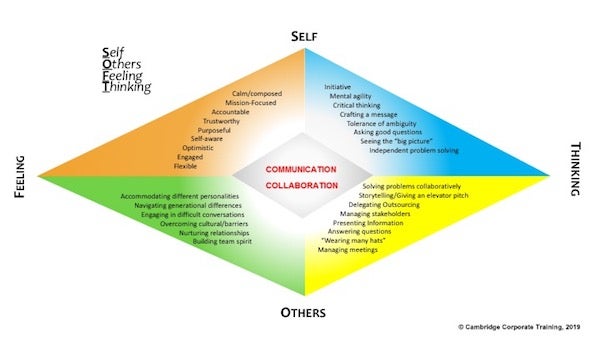This article was published in Scientific American’s former blog network and reflects the views of the author, not necessarily those of Scientific American
When demand for an industry’s output grows faster than its labor supply, the result is a structural talent gap. And when this output is characterized by groundbreaking scientific discovery and cutting-edge technologies, created by a highly skilled labor force whose educational training requires long lead times and global mobility, that gap rapidly becomes a chasm. Crossing this chasm—from scientific discovery to commercial success—is the biggest challenge facing today’s life sciences ecosystem.
The mission of the Massachusetts Biotechnology Foundation (MassBioEd), where one of us (Talanian) is director of talent and workforce development, is to grow a talented workforce to sustain a world-class life sciences industry—in essence, to close the talent gap. Naturally, MassBioEd spends a lot of time with scientific leaders and human resources professionals to learn what they seek when recruiting and promoting employees. Overwhelmingly, these employers want to talk less about specific technical competencies and more about the importance of “soft skills” as a key variable in the life sciences talent equation.
Despite this almost universal agreement on the need for soft skills, very few employers could articulate exactly what this means beyond two oft-mentioned words: “communication” and “collaboration.” So MassBioEd embarked on a project to identify specific soft skills deemed most essential in the life sciences industry. In partnership with Cambridge Corporate Training, where one of us (Lawrence) is president and another (Haubenstock) was recently an intern, the foundation interviewed 52 leaders—hailing from tiny start-ups to multinational organizations and weighted evenly between human resources professionals and scientific/technical managers—and asked them for tangible examples of situations in which an employee’s soft skills made a noticeable impact, whether positive or negative.
On supporting science journalism
If you're enjoying this article, consider supporting our award-winning journalism by subscribing. By purchasing a subscription you are helping to ensure the future of impactful stories about the discoveries and ideas shaping our world today.
Participants were promised anonymity to share candid, insightful stories, providing abundant raw data to complete a thorough textual content analysis, in which words, phrases, conversational gestures and verbal emphasis were coded and iteratively combined to form meaningful patterns and construct theory. The process culminated in a conceptual map of specific behaviors that emerged from respondent interviews (See illustration below).
Some of our study participants expressed discomfort with the term soft skills and suggested alternative nomenclature, such as “professional skills,” “leadership” or “emotional intelligence.” The idea that soft skills were embedded in immutable personality traits was also raised, but we agree with the overwhelming majority of our interviewees that people of all personality types can learn, practice and improve constructive behaviors. Despite these differences, wefound almost unanimous agreement that the bundle of skills involved are essential for individual career success and—perhaps more crucially—can make or break a team, a project or even a company.
As patterns emerged from textual content analysis, specific behaviors mapped into four quadrants, with axis poles labeled as “Self,” “Others,” “Feeling” and “Thinking”—thus reclaiming the term “S.O.F.T. skills” for today’s life sciences practitioners:

Credit: Jennifer F. Lawrence
Were this analytic approach applied to other industries, we believe results would differ, based on sector composition. Our interest is in the life sciences and how these behaviors affect the quality of individual careers, as well as corporate success or failure. Several factors make these findings especially relevant and crucial to this industry at this time:
1. “Talent” is hard-won. It takes many years for individuals to acquire the scientific and technical skills and industry knowledge necessary to become leaders in their field.
2. This talent is initially developed in academia, and the behaviors that typically lead to successful academic careers do not correlate highly with those required in the corporate world. Early-career scientists often must recalibrate behaviors to align with corporate expectations.
3. The missions of life sciences companies are often exceedingly difficult—curing cancer or investigating the cause of a rare disease, for example—and scientists are rightly prized for technical prowess. This focus, however, often leads to a belief that nontechnical skills are less relevant and thus can excuse an individual’s negative behaviors. The lack of S.O.F.T. skills constrains career progression and company performance.
4. Because the life sciences education pipeline has long lead times, even small improvements in building S.O.F.T. skills will yield significant improvement in closing the talent gap.
5. A company’s growth stage influences its assessment of which S.O.F.T. skills are needed. Start-ups may act as quasi-academic labs. When a company grows and enters the clinical development stage, leaders with an expanded set of S.O.F.T. skills are desperately needed. This situation changes again as a company matures from clinical research to manufacturing and sales.
6. Many small and midsize companies do not have a full-time HR staff member dedicated to learning and organizational development, so S.OF.T. skills training, if offered at all, is done ad hoc by individuals without continuity or best practices frameworks.
7. With so many life sciences companies growing rapidly, scientists with little background in managing people are often hired or promoted into leadership positions and find themselves dealing with peers and superiors with equally limited managerial experience. As a relatively young industry, many companies are growing at the same time, reducing the overall population of seasoned leaders available to coach and train others.
8. While making the transition from start-up to mid-sized organization, many life sciences companies double or triple their headcount within a year or two. With such an influx of new personnel, the need for excellent S.O.F.T. skills is especially acute.
9. The traditional definition of “management” should be revised. Early-career scientists are frequently expected to manage multiple projects, often at external sites such as universities or contract organizations, without having any local direct reports. Therefore, they may not qualify for traditional leadership training that is commonly available in more mature industries.
10. Employees who are unhappy with their managers leave: Employee “churn” is expensive and disruptive to the scientific process. It makes companies vulnerable to loss of proprietary scientific knowledge and is a contributing factor to the industry’s overall talent gap. According to the Bureau of Labor Statistics, the nationwide rate of voluntary termination (people quitting their jobs) is about 2.5 percent across the private sector. A 2019 Radford survey of the global life sciences industry showed an average voluntary termination rate of 13 percent for the U.S. and 12.5 percent for the world by the first half of the year.
We believe that developing a common language to describe S.O.F.T. skills will help individuals become more aware of their own behaviors and will help companies make better decisions in hiring, developing and promoting employees. These eagerly sought skills are not embedded personality traits but behaviors that can be taught and assessed in an intentional way.
We hope this essay is received as a call to action for companies to invest in developing the S.O.F.T. skills of their employees and for the industry at large to adopt a common language for describing them—along with uniform guidelines to help employees and companies achieve their fullest potential and, ultimately, to help shrink the talent gap that threatens the industry’s success.
Recommendations for Next Steps
Hiring
1. Name it: State specific soft skills needed for a given position.
2. Define it: Explain the specific skills, without resorting to recruiting proxies such as educational degrees or years of experience.
3. Seek it: Structure interviews to identify skills a candidate has or needs to build to succeed in the role.
Training and Coaching
4. Operationalize it: Provide guidelines and objectives to deepen and develop specific skills at every level of the organization.
5. Create it: Build an industry-specific curriculum that places soft skills in context.
6. Practice it: Provide opportunities for employees to learn and use specific skills with feedback and coaching.
Policies and Processes
7. Reward it: Require and reward the training and growth of soft skills.
8. Recognize it: Define the term “manager” by sphere of operational influence, including partnerships, collaborations and cross-functional teams, not only direct reports.
9. Build it: Initiate a biotech talent development network to “train the trainers,” raise awareness and elevate industry norms.
10. Resource it: Create industry working groups to support talent development initiatives and expand collective expertise.
